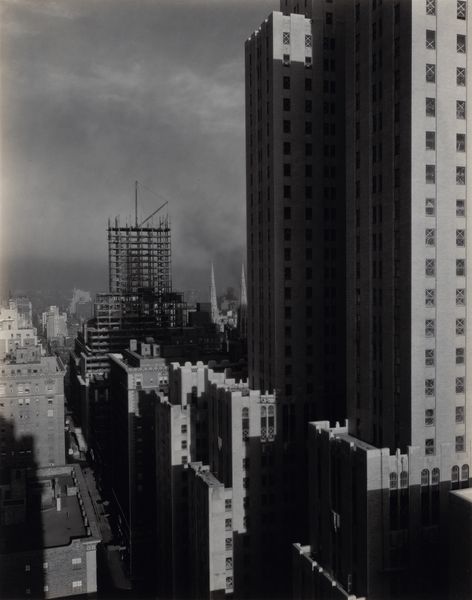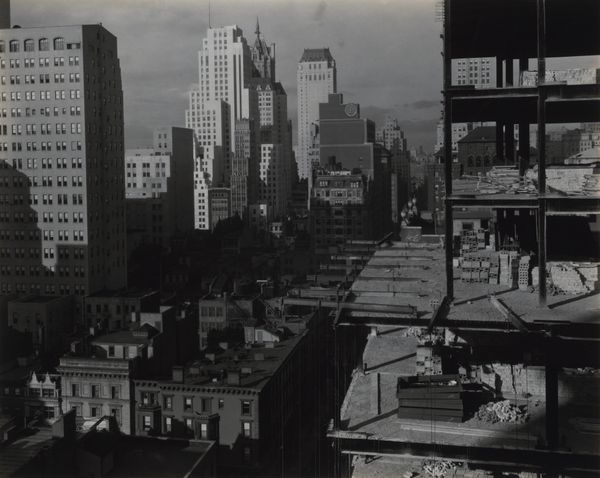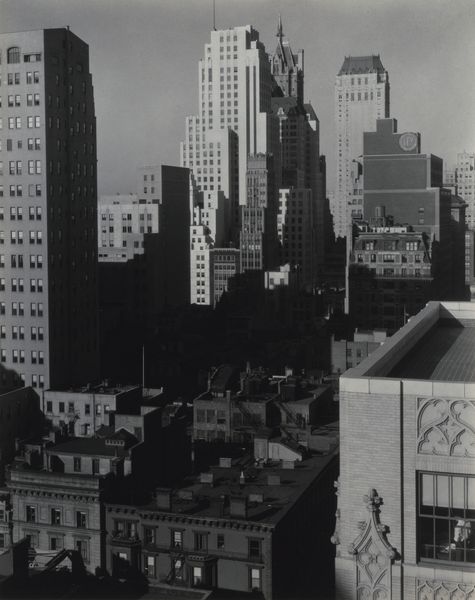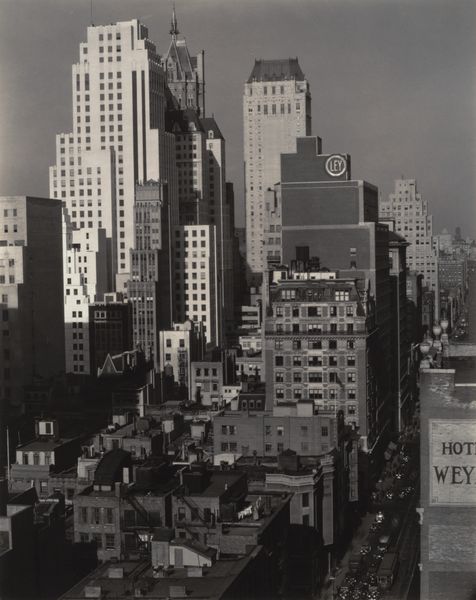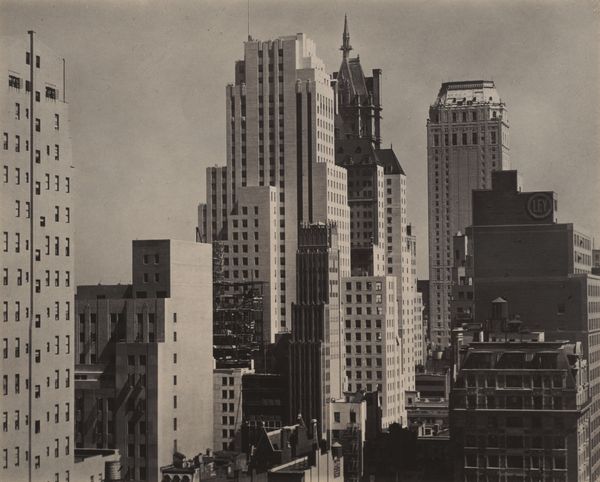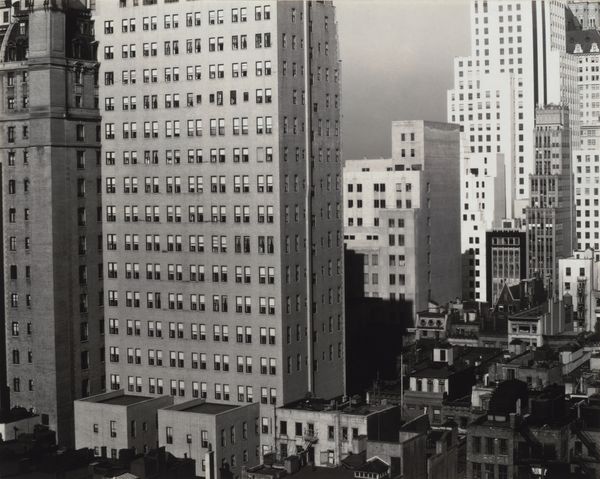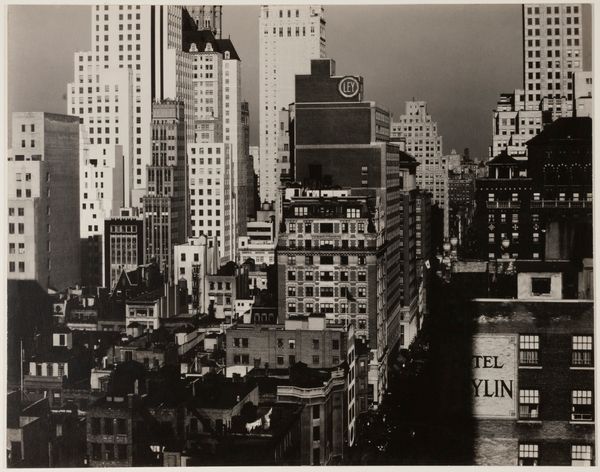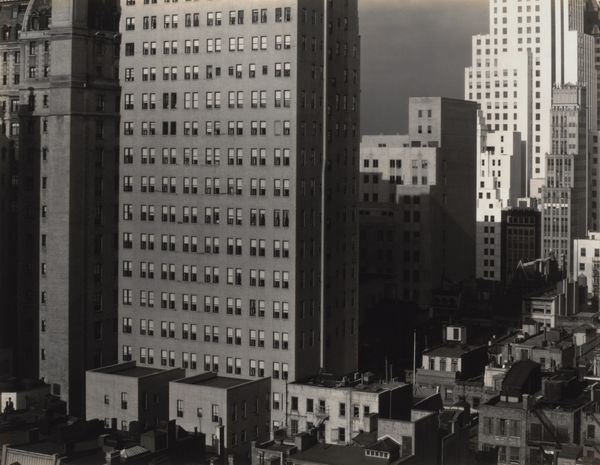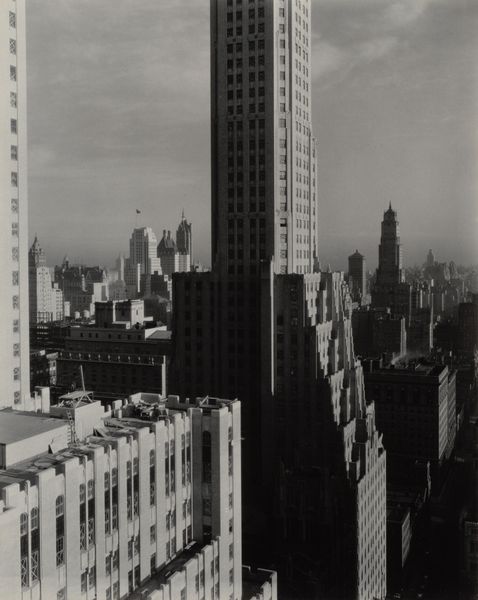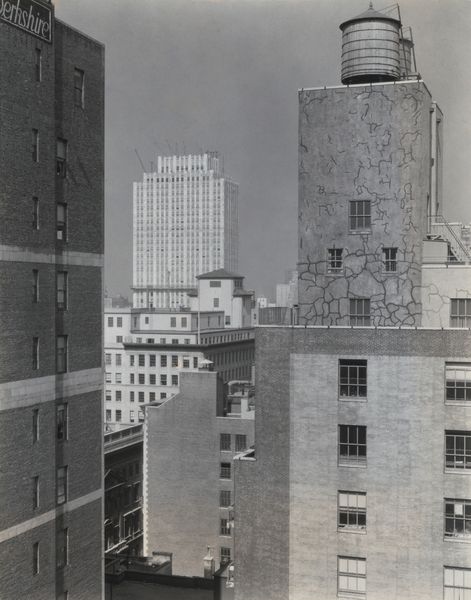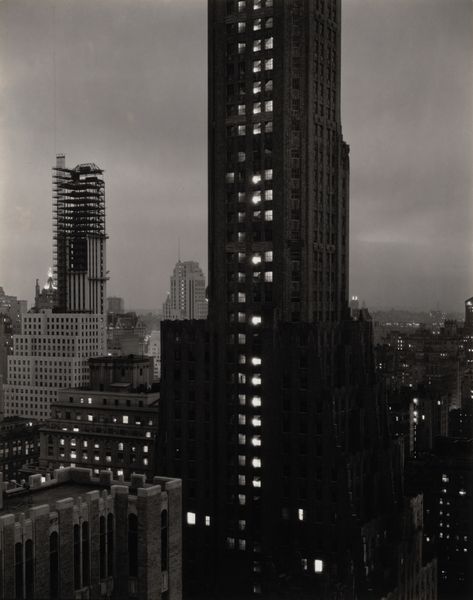
photography, gelatin-silver-print
#
black and white photography
#
photography
#
black and white
#
gelatin-silver-print
#
monochrome photography
#
cityscape
#
monochrome
#
modernism
#
monochrome
Dimensions: sheet (trimmed to image): 18.7 x 24 cm (7 3/8 x 9 7/16 in.) mount: 55.7 x 46 cm (21 15/16 x 18 1/8 in.)
Copyright: National Gallery of Art: CC0 1.0
Curator: What a strikingly composed photograph. This is Alfred Stieglitz’s “From My Window at the Shelton, Southeast,” a gelatin-silver print created in 1931. Editor: My immediate impression is one of immense urban density. There’s a palpable sense of stacked geometries and looming structures dominating the frame. The monochrome palette contributes to an almost industrial, hard-edged feeling. Curator: Stieglitz took this from his apartment window at the Shelton Hotel, which was quite avant-garde for its time, with modern amenities and stunning city views. He was deeply interested in documenting modern life and its structures. Consider how he uses this new vantage point, not just capturing the image, but also how the very act of seeing changed because of places like this. Editor: Absolutely. I am intrigued by the visual symbolism here. The imposing skyscrapers signify more than just architecture; they embody aspirations, power, and the relentless drive of modernity. The photograph's stark contrasts evoke a duality – light and shadow, progress and perhaps, a loss of something… nostalgia, even? Curator: Indeed, Stieglitz aimed to capture the essence of America during this period, which was experiencing rapid urbanization. This gelatin-silver printing process itself is significant. Its precision allows for these incredible contrasts, the almost clinical detail with which we observe the bricks, the window panes, and rooftop clutter. Editor: And think about how the monochrome filter heightens the industrial aspect of it, doesn’t it? Almost as if turning these buildings into steel and concrete totems. What do you suppose he was trying to preserve, or critique, through this very deliberate viewpoint and stark presentation? Curator: That tension is compelling, and the picture seems balanced between those opposing poles of observation and preservation. Stieglitz elevated photography, he really turned the daily practice into an art, revealing the means of representation even as the image unfolds to the viewer. He really lets you feel how his work reshaped ideas of place. Editor: Yes. This image stays with me. Stieglitz captured something raw about the early 20th century in America.
Comments
No comments
Be the first to comment and join the conversation on the ultimate creative platform.
